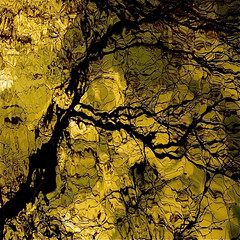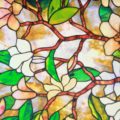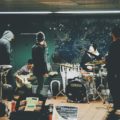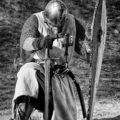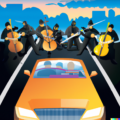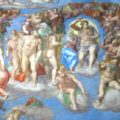Art and music have always been essential elements of any society, regardless of whether they are simple and crude or complex and advanced. Art is the cultural output of a society that reflects its attitudes, values, morals, and ideals of beauty. Art serves as one of the significant measures of a civilization and offers a window into the beliefs and values of a particular culture.
The first art forms we have recorded date back to ancient times before the classical eras of Greeks and Romans. Venus of Willendorf, estimated to have been created around 20,000 B.C., is a crude statue that likely represents female fertility. Five thousand years later, artistic drawings were made on a cave wall in what is now modern France, depicting animals in their natural environment. The first major artists whose work we have in abundance were the Ancient Egyptians, with their construction of temples, pyramids, and sphinxes from around 2500 years before Christ. Many of their artistic achievements can still be seen today in museums and the desert. The most well-known form of ancient art is the Greek and Roman style, which produced beautiful temples and coliseums. The ancients were most noted for their architectural accomplishments. Not much is known about ancient music because no records of their achievements have survived. It is speculated that their music was likely folksy and lively, depending on the region in which it was played. The ancients set the stage for the artistic masters to come.
With the advent of Christianity, the arts gained a new patron, and the Christian Church and its theology became the dominant subject of most artistic and musical creations over the next 1000 years. The influence of Christendom was first seen during the Roman period, but it wasn’t until the Medieval and Romanesque periods that Christianity fully dominated Western art. In music, the Church compiled various monophonic chants, such as the Gregorian chant, to celebrate Mass. The composers are unknown, and their rhythms were derived from Latin texts. The Gothic period began in 1100 A.D. and continued until 1400 A.D. The most significant achievements of this period were in architecture, with the Gothic Cathedral The Evolution of Gothic Architecture - Gothic architecture is a design style that reached its zenith during the High Middle Ages. It evolved from Romanesque architecture and was later succeeded by Renaissance architecture. Gothic structures first appeared in 12th-century France and continued well into the 16th century. This architectural style was often used in the construction of cathedrals, abbeys, palaces, and… becoming an icon of the Church’s power through its innovative design, including elements such as the pointed arch, the ribbed vault, flying buttress, nave, and double aisle. Artwork was almost entirely controlled by the church, and the era produced masterpieces such as The Annunciation by Simone Martini and Lamentation of Christ by Giotto di Bondone. The music of the Gothic era evolved into polyphony, and the organum was developed. The Gothic era marked the end of the near-total control the church had over the arts.
Art reached new heights when it broke away from the strict controls of the Church during the Renaissance period, which lasted from 1400 to 1600. The greatest artists and sculptors in history, such as Michelangelo and Leonardo da Vinci Western Art - Known Western Artists & Paintings - [caption id="" align="alignleft" width="350" class="zemanta-img"] The Mona Lisa. (Photo credit: Wikipedia)[/caption] Art is highly subjective, and while the following list may not be exhaustive or completely comprehensive, it can serve as a fun way to learn more about familiar artists and discover new ones you may not have known about before. Michelangelo was an Italian… , emerged during the Renaissance. Much of the art was still religious in nature, as demonstrated in many of Michelangelo’s works, but artists like Leonardo occasionally broke away from purely religious painting Painting By Faith - Art or painting is undoubtedly a symbolic representation of people's thoughts, beliefs, and values. The term "medium," often used to describe various types of materials used in creating a piece of art, or painting suggests that it exists as a midway point between the artist's mind and the audience. Not only does the painting itself… , as seen in his Mona Lisa. Artists used the same principles as the Gothic artists in terms of line, space, color, and formal organization, but the humanistic movement of the Renaissance brought a whole new aspect to the arts. Humanism introduced a different organization of the basic elements of art as used during the Gothic period. Renaissance artists employed linear perspective and their colors were brilliantly polychromatic in their paintings. An essential tenet held by many Renaissance artists was that art should be true to nature. The obsession these artists had with precision, creativity, and the visual ideal led to one of the most significant and beautiful artistic eras in history.
The Baroque and Rococo periods followed the Romantic era, filled with ornamentation and artistic excess. The term “baroque” (from Portuguese “barroco”) translates to “irregularly shaped pearl.” The Baroque period produced artists such as Rembrandt, and new uses of shadowing and color became evident in paintings. The artistic excess of the Baroque was mainly seen in its architecture, which was considered an overly ornamented imitation of Renaissance design. The music of the Baroque period emphasized wide, singable melodies and rich harmonies full of pathos. The Baroque period witnessed the expansion of the Protestant Reformation and the Catholic Counter-Reformation. Artists like Rembrandt van Rijn were Protestant, while Peter Paul Rubens played a significant role in the Catholic response. Renowned composers such as Handel and Bach emerged from this period.
The Classical period came after the excessiveness of the Baroque, lasting around fifty years and producing some of the most exceptional musical talents in history. The Classical period responded to the extravagance of the Baroque, emphasizing excellence of form. Great composers The Emperor's New Clothes - Ananda Sukarlan is an Indonesian composer and pianist living in Spain. This is an article he wrote for a magazine which has been published a few years ago in Spanish. We are very proud to have the original in English which has never been published anywhere, so this is an exclusive writing for ManuelMarino.com. Read… like Franz Joseph Haydn and Wolfgang Amadeus Mozart emerged from this era. The classical ideal of excellence in form was displayed in art, architecture, and music. The artistic and architectural accomplishments of the period were not particularly significant, but they inspired Inspired by nature - Artist Robert Tucker talks about himself and his artist experience in this exclusive article. Inspired by nature The glorious portal of a new year is again upon me. My mind has wondered since the start of 2008 as to which direction my creative self will take. For me a torrent of feelings were released in… the Romantic period as a reaction. New instruments like the piano, violin, viola, and cello became common. The Classical period’s focus on excellence led to some of the most beautiful music in history.
The Romantic period saw a significant surge in creativity in the arts, with music continuing to flourish in the works of Beethoven, Brahms, Mahler, and Verdi. The Romantic era was characterized by emotion, as the world underwent crisis and change. Romantic artists emphasized freedom and self-expression. Many paintings depicted revolutionary scenes, such as Delacroix’s “Liberty Leading the People,” created in 1831. Following the Romantic period was the Impressionist period, which focused on how light affected color in painting. Numerous landscapes were painted, and the artists sought to enhance the Romantic effort to evoke emotion. Famous impressionist artists include Monet, Manet, and Renoir.
The Modernist movement began after the Impressionist period, with artists focusing on creating new and unique works in both music and art. Much of the art is abstract, attempting to represent emotions and the events occurring in our technological society.
Art and music throughout the ages have gone through various stages of development, experiencing peaks and troughs. This class has given me a deeper understanding of the history of the arts and what I find aesthetically pleasing. I look forward to learning more and continuing to develop artistic appreciation as I expose myself to the arts.
Manuel Marino is a seasoned Senior Producer, Music Composer, and Artist with over a decade of experience. He specializes in branded entertainment across various mediums, including video games, films, and advertising campaigns. With 20+ years as a game music composer, Manuel has worked on numerous platforms, creating diverse orchestral soundtracks. HIRE ME


 Manuel is a passionate, driven, and techsavvy AV technician,
Manuel is a passionate, driven, and techsavvy AV technician, 